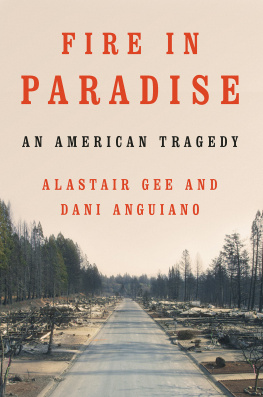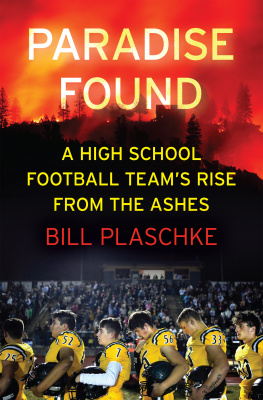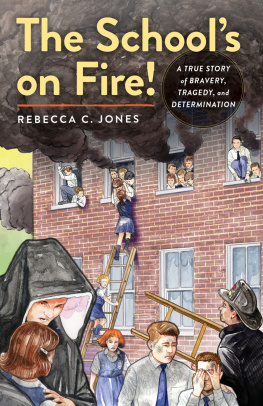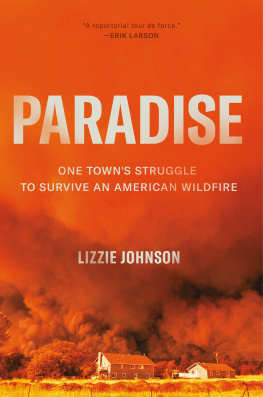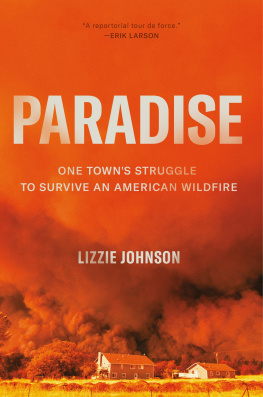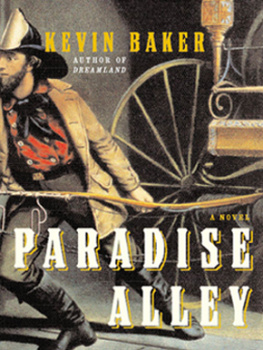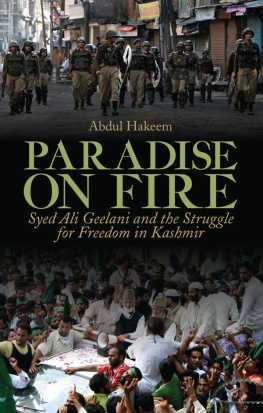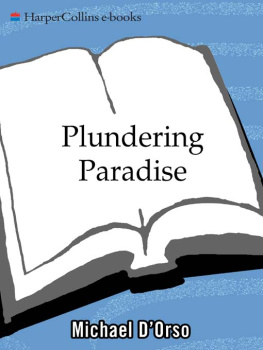
FIRE IN
PARADISE
AN AMERICAN TRAGEDY
ALASTAIR GEE AND DANI ANGUIANO

W.W NORTON & COMPANY
Independent Publishers Since 1923
A t 8:30 a.m. on November 8, 2018, John Sedwick pounded on his daughters bedroom door. Fires coming up over the ridge, Skye, he told her, his voice calm but loud, a sign of his increasing deafness. Skye got up quickly.
Sedwick was not an alarmist. He knew fire, and if he considered it serious, it was. As part of a career that included periods as a museum docent, logger for the forest service, and orderly at a state hospital, Sedwick had spent years as a volunteer firefighter on the Paradise Ridge, a forested perch in the foothills of Californias Sierra Nevada mountain range. Hed been living here in the community of Magalia, just north of Paradise, off and on since he first visited as a child. More than seventy years later, Sedwick still resided in the same home, a century-old two-bedroom cabin with orange walls and a bathtub on the back porch. Skye, who had recently turned fifty, had moved in with him a couple years ago, when she was recovering from various health problems.
As smoke lingered in the air, Skye, fresh out of the shower, hurriedly gathered the things shed need: clothes, shoes, and the makeup bag she never left home without.
The Sedwicks rambling property was dotted with Johns vintage vehicles, including an ancient flatbed truck and a faded red 1940s-era bulldozer its environs were magnificent. The inhabitants of the town of Paradise, and the smaller communities that surrounded it, spent their days among a gorgeous profusion of pines and oaks and wildflowers. More and more it was becoming a refuge for people priced out of the rest of the state, where the cost of living had risen to untenable levels.
Occasional wildfires broke out near the Ridge. But Sedwick, and nearly anyone who had ever paid much attention, knew that the area could face a real fire, a bad one. People prepared for the worst, but they didnt always comprehend how awful the worst could be. When the fire risk was high, Sedwick always made the same plea as he and his daughter sat down for meals: Please Jesus, no fires today.
After packing, Skye walked outside to where her father stood in the yard. Dad, is there something I should do? Should I wet the ground? Sedwick shook his head. When she returned with her bags, Sedwick told her that he would stay, for now. Skye, an auburn-haired artist who used to work as a counselor in a juvenile detention center, was planning to meet her boyfriend at a gas station a mile or so down the road. She took a few steps and paused. Still holding her bags and her dog, Skye hugged her trim, compact father goodbye. He grunted when she said I love you, but she knew that meant I love you, too.
The road that curved past their home was already blocked and nearly at a standstill with cars trying to evacuate. Dont go that way, Sedwick had warned Skye. She set off down a quiet lane leading away from their house, shaded by ponderosa pines and Douglas firs, until she was just far enough from the cabin that Sedwick wouldnt have heard her if she yelled. She could see flames catching in the undergrowth, and thought about turning back to tell him how bad things were but decided against it. He knows, she thought to herself. Sedwick was stubborn. There was no getting him to change tack once he had made a decision. Dad will leave if it gets bad.
She moved even more quickly, through the smoke and up onto an embankment that she used where the road became impassable. Ethereal bits of glowing dust fell from the sky. Skye watched them uneasily. Embers, she thought.
I t was approximately 9:30 a.m. A few hours earlier, satellites had captured flames approaching Paradise at about 21 miles per hour, faster than the previously posited maximum for wildfire spread. They were consuming almost four hundred American football fields worth of vegetation a minute.
Smoke blotted out the sun and streamed low over the town, reducing the visible world to Paradise and nothing more. The flames, when they arrived, were unstoppable, far beyond the capacity of any firefighter to control. In places they burned as hot as a crematorium. Cars turned into rivulets of molten metal. Homes became matches that set fire to the next. The conditions gave rise to apparitions only seen in the most extreme of blazes: fire tornadoes.
Within hours, the fire would consume Paradise, trapping thousands of people who were trying to flee on roads designed for a fraction of that number. Emergency responders would mount a heroic defense and rescue operation that included at its peak 5,500 firefighters and 600 engines, but when the blaze was finally brought under complete control with the help of rain seventeen days later, it had become the deadliest wildfire in America in a century, and the deadliest ever in recorded California history. The town of Paradise would suffer a fate almost without parallel in the modern era in the United States: total devastation.
I n the wake of the Camp Fire, a century of certainties about the ability of humans to dominate fire were in question.
To Lincoln Bramwell, the chief historian at the US Forest Service, the story of Paradise reads like these accounts from the late 19th century, back before wildfire had been brought under paramilitary command. In October 1871, for instance, after railway workers sparked a brush fire, the city of Peshtigo, in Wisconsin, was consumed in the span of an hour, and 1,500 people died there and elsewhere across the 1.2 million acres that were scorched. I see us going back to the future, Bramwell said. Going back to a time when fire was not in our control.
For some researchers, it no longer seemed rash to think that a wildfire could, under the right conditions, maraud into the very core of major metropolitan areas, such as Los Angeles, San Diego, and the cities of the San Francisco Bay Area. In 1991, dozens had been killed on the urban fringe in Oakland. Where I live in the flatlands of Berkeley, a comprehensively built-up and urbane place, as the crow flies its less than a mile from where the Oakland Hills Fire started, said Faith Kearns, a University of California scientist with a specialism in wildfire. It wasnt completely farfetched to her that a blaze could reach her home. My neighborhood is full of Victorians. My neighbors window is about six feet away from my own she said, pausing in thought. I think well see it. I think well see it.
From his ranch in the Central Valley town of Williams, former California governor Jerry Brown had seen many of Californias fires in the guise of smoke that hung overhead. Brown served two terms as California governor starting in 1975, then was reelected for another two terms beginning in 2011. By the end of a political career that spanned the states worst drought in 1,200 years and such a parade of fires that they blurred into one another, he was clear-eyed about where America was headed. Paradise was a horror, he said. With climate change we can expect a lot more.
In fact, the town quickly became a poster child for the climate crisis. Bernie Sanders unveiled a $16 trillion climate plan for his 2020 presidential run on a visit to Paradise. The environmental activist Greta Thunberg toured it in October 2019.
That fall, it felt like dj vu. Millions of people across the state were forced to go without power for days as PG&E and other utilities de-energized electric distribution lines during dry and windy conditions. It seemed unfathomable that in twenty-first-century America, so many would have to live in the dark for as long as a week, with refrigerated food turning rotten and dead medical devices. But, of course, the loss of an entire town in a wildfire had also been unfathomable.
Next page
